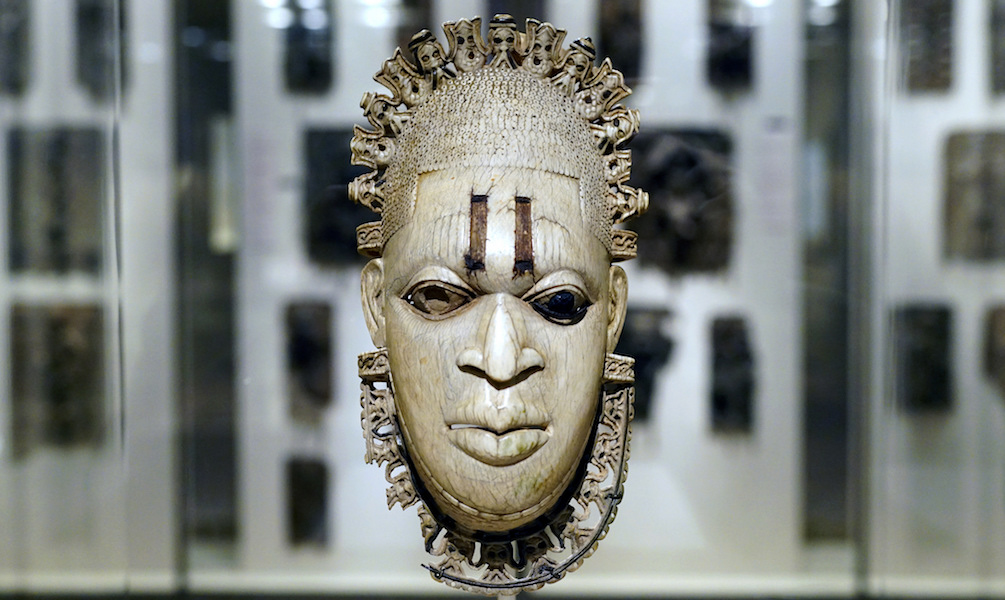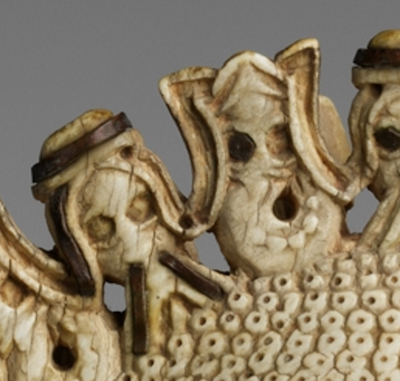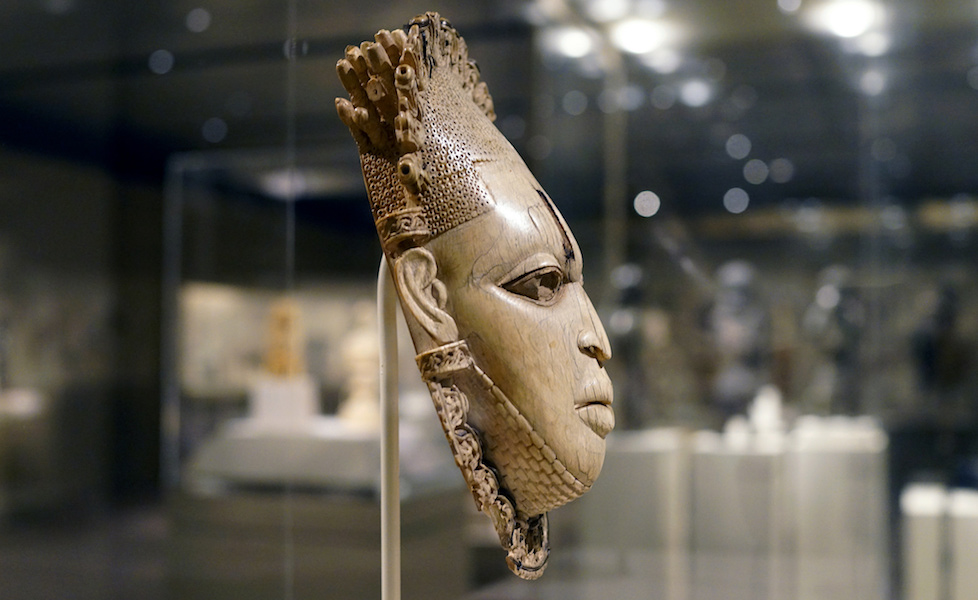
Queen Mother Pendant Mask (Iyoba), 16th century, Edo peoples, Court of Benin, Nigeria, ivory, iron, copper, 23.8 x 12.7 x 8.3 cm (The Metropolitan Museum of Art; photo: Steven Zucker, CC BY-NC-SA 2.0)
This pendant mask was created in the early sixteenth century for an Oba (the king) named Esigie, in honor of his mother Idia. The face has softly modeled, naturalistic features, with graceful curves that echo the oval shape of the head. Four carved scarification marks, a number associated with females, indicate her gender.

Detail, Queen Mother Pendant Mask (Iyoba), 16th century, Edo peoples, Court of Benin, Nigeria, ivory, iron, copper, 23.8 x 12.7 x 8.3 cm (The Metropolitan Museum of Art)
Iron inlays for the pupils and rims of the eyes intensify the Queen Mother’s authoritative gaze and suggest her inner strength. The two vertical depressions on her forehead were also inlaid with iron. She is depicted wearing a choker of coral beads and her hair is arranged in an elegant configuration that resembles a tiara. The intricately carved openwork designs are stylized mudfish alternating with the faces of Portuguese traders. Both motifs are associated with the Oba and his counterpart, the sea god Olokun. The mudfish is a creature that lives both on land and in water, and a symbol of the king’s dual nature as both human and divine. Similarly, the Portuguese, as voyagers from across the sea, may have been seen as denizens of Olokun’s realm. Like the sea god, they brought great wealth and power to the Oba.

Queen Mother Pendant Mask (Iyoba), 16th century, Edo peoples, Court of Benin, Nigeria, ivory, iron, copper, 23.8 x 12.7 x 8.3 cm (The Metropolitan Museum of Art; photo: Steven Zucker, CC BY-NC-SA 2.0)
In Benin culture, ivory holds both material and symbolic value. As a luxury good, ivory was Benin’s principal commercial commodity and helped to attract Portuguese traders who, in turn, brought wealth to the kingdom in the form of copper and coral. In addition, ivory is white, a color that symbolizes ritual purity, and is also associated with Olokun, who is considered to be a source of extraordinary wealth and fertility.
Queen Idia is honored as a powerful and politically astute woman who provided critical assistance to her son during the kingdom’s battles to expand. Upon the successful conclusion of the war, Esigie paid tribute to Idia by bestowing upon her the title of Queen Mother, a custom that has continued with subsequent rulers until the present time. The title of Queen Mother, or Iyoba, is given to the woman who bears the Oba’s first son, the future ruler of the kingdom. Historically, the Queen Mother would have no other children and, instead, devote her life to raising her son. Oba Esigie is said to have worn the mask as a pectoral during rites commemorating his mother. The hollow back, holes around the perimeter, and stopper composed of several tendrils of hair at the summit suggest that the mask functioned as an amulet, filled with special and powerful materials that protected the wearer. Today, such pendants are worn at annual ceremonies of spiritual renewal and purification.
© 2006 The Metropolitan Museum of Art, New York (by permission)

